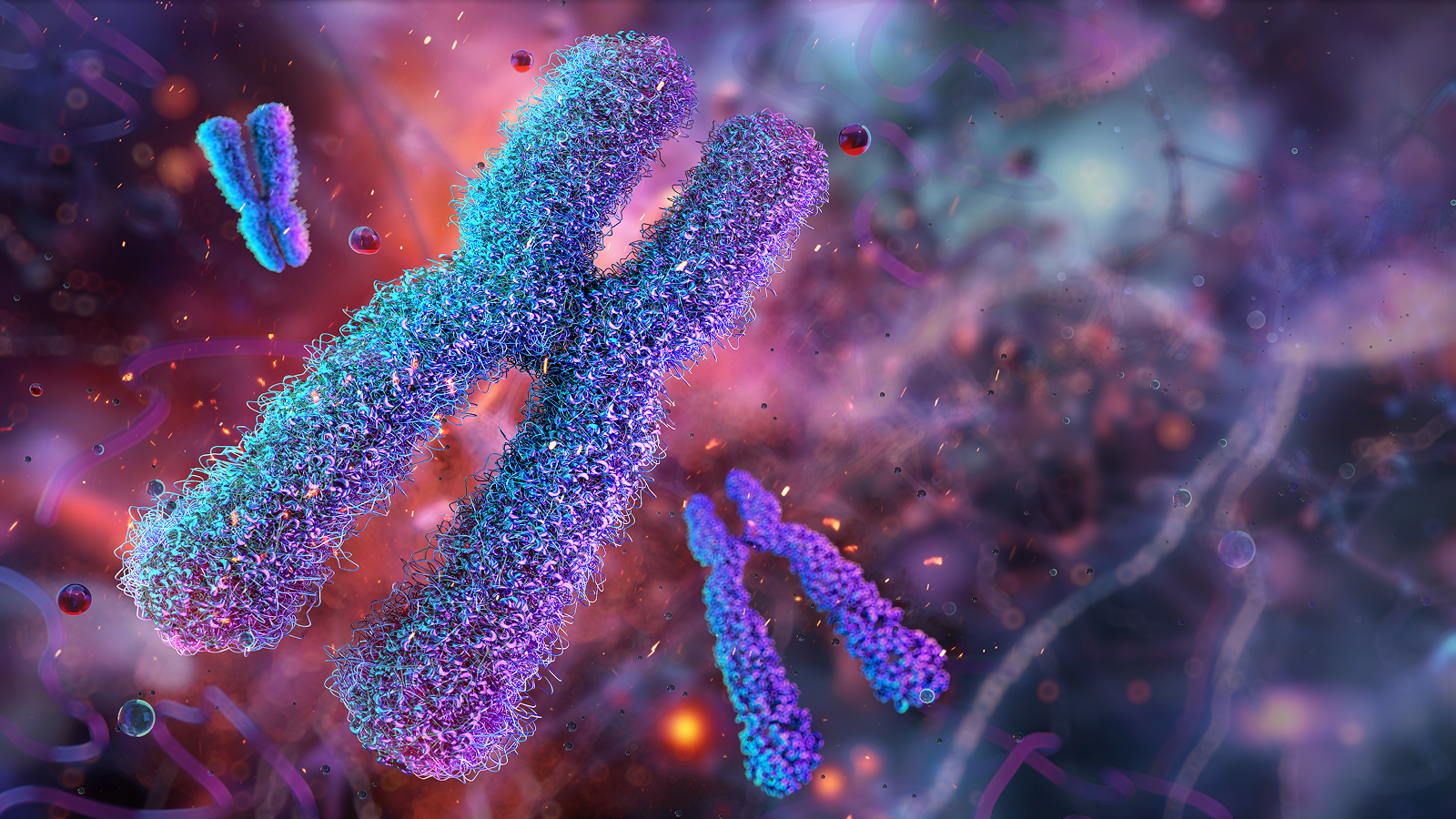Gene on the X chromosome may help explain high multiple sclerosis rates in women
A gene on the X chromosome revs up inflammation in the female brain, which may explain why rates of multiple sclerosis are higher in women than in men, scientists suggest.

Brain inflammation may be fueled by a gene on the X chromosome, a new study in mice suggests.
And in female mice, who carry two X chromosomes, a diabetes drug called metformin may work to counteract that inflammation.
If these findings bear out in later studies, they could help to unravel the long-standing mystery of why women, who have two copies of this inflammation-driving gene, are more prone to certain autoimmune diseases, particularly after menopause.
A disparity between the sexes
Our bodies are patrolled by immune cells that provide protection against bacteria and viruses, but sometimes, these defenses turn on us. In the autoimmune disorder multiple sclerosis (MS), for instance, the immune system attacks myelin, the fatty insulation surrounding the nerve fibers in the brain and spinal cord. This leads to symptoms such as muscle weakness and difficulty walking, as well issues with memory and thinking.
The disease is two to three times more common in women than in men, and symptoms often become more debilitating after menopause. But until recently, scientists didn't know why.
Dr. Rhonda Voskuhl, a neurologist and neuroscientist at UCLA, has been investigating that mystery for decades. Clinical patterns showing higher disease rates in women are "a really valuable clue" that the difference may be driven by an X-linked gene, Voskuhl told Live Science.
That's because women typically inherit an X chromosome from each parent, while men inherit only one from their mothers. Normally, one set of X-linked genes in women is silenced, leaving only one active gene from either the mother or the father. But a handful of genes escape this "X inactivation," Voskuhl told Live Science, giving women an enhanced dose of X-linked gene activity.
Get the world’s most fascinating discoveries delivered straight to your inbox.
To see if X-linked genes might explain women's higher rates of MS, Voskuhl and her colleagues looked at existing data for human microglia, the primary immune cells in the brain. They looked at cells from both men and women with MS.
Compared with those from men, women’s microglia had higher levels of a protein called KDM6A, which is encoded by the KDM6A gene on the X chromosome. Women's cells also showed higher levels of immune-related gene activity.
To investigate the role of KDM6A gene in the brain, Voskuhl and colleagues used techniques to "knock out" the activity of the gene in lab mice — specifically in the rodents' microglia. Then, they induced an MS-like condition in the mice using established methods.
Female knockout mice walked better, and their brain tissue had less nerve damage and more intact, myelin-covered nerve fibers compared with female mice with a functional KDM6A gene. Knockout female mice also showed less infiltration by immune cells, called T cells, compared with female mice with working KDM6A genes.
But deleting the KDM6A gene had no effect in male mice, the researchers reported in the new study, published Oct. 15 in the journal Science Translational Medicine. The finding hints that the KDM6A gene may fuel brain inflammation in females because they have two copies of it and one copy "escapes" silencing. Thus, females may get an increased dose of the KDM6A protein.
The researchers then looked for a drug that could mimic the effects of deleting KDM6A. Earlier studies had shown that metformin can block the KDM6A enzyme in other cell types, so Voskuhl wondered whether it would have the same effect in microglia. Her team found that metformin calmed brain inflammation and improved symptoms in female mice while having little effect in male mice.
This points to the potential for sex-specific treatments, given that both KDM6A activity and metformin's effects differ between men and women. If such a treatment were only tested in men or in a mixed pool of study participants, its effectiveness in women may not be noticeable, Voskuhl explained; so data from women would need to be gathered and analyzed in isolation.
"It's a brilliant study," said Dr. Lawrence Steinman, a neurologist at Stanford University who was not involved in the new work, because it identifies one of the key genes that make women more susceptible to MS. It's "another step forward" in understanding how KDM6A shapes immune activity in the brain and keeps microglia "on the quiet side," Steinman told Live Science.
Follow-up studies and clinical trials are still needed to pinpoint the most clinically effective ways to block KDM6A in women's microglia, and to confirm that such a drug would be therapeutically beneficial.
These findings also hint at an interplay between hormones and chromosome-linked inflammation. Past work has shown that estrogen generally counteracts the inflammation in the body, helping balance immune activity that defends the female brain against pathogens and excess inflammation during the reproductive years, Voskuhl said.
"So when estrogen levels go down in menopause," she said, "you lose that protection."
This article is for informational purposes only and is not meant to offer medical advice.
Brain quiz: Test your knowledge of the most complex organ in the body

Zunnash Khan is a mechatronics engineer and a science journalist from Pakistan. She has written for Science, The Scientist and Brainfacts.org, among other outlets.
You must confirm your public display name before commenting
Please logout and then login again, you will then be prompted to enter your display name.


